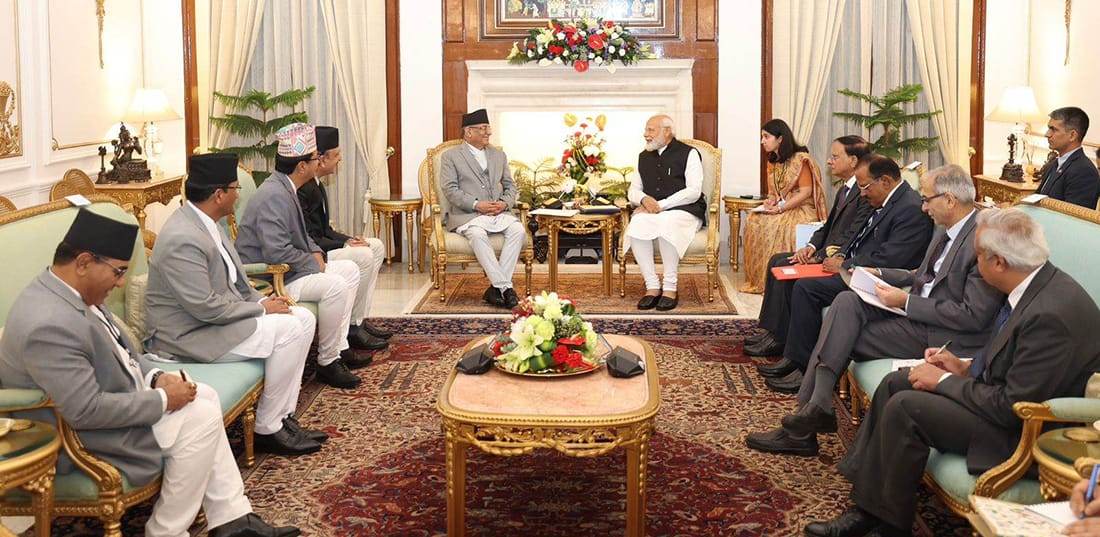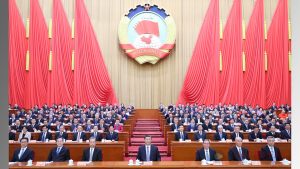
Unveiling the Dynamics of Indo-Nepal Relations in 2023
NEW DELHI, Dec 15 – India and Nepal, the neighboring South Asian nations, share more than just a border that stretches over 1,850 km, encompassing five Indian states—Sikkim, West Bengal, Bihar, Uttar Pradesh, and Uttarakhand. The historical, economic, and cultural linkages between the two countries span centuries. The Treaty of Peace and Friendship signed in 1950 solidified the diplomatic relations between India and Nepal, with the landlocked Himalayan nation heavily relying on India for the transportation of goods and services.
This article delves into the notable developments observed in Indo-Nepal relations throughout the year. In December of the previous year, Nepal elected Pushpa Kamal Dahal ‘Prachanda’, as its new Prime Minister. Following tradition, the newly elected Prime Minister embarked on a four-day diplomatic visit to India from May 31 to June 3 this year. The visit resulted in the signing of seven Memoranda of Understandings (MoUs) aimed at enhancing cooperation in various areas, including cross-border petroleum pipelines, digital payments, hydroelectric power, and integrated check posts.
One of the most significant outcomes was the signing of a transit treaty, upgrading the 1999 agreement and providing Nepal access to designated Indian sea ports by road, rail, and water. This renewal is expected to open doors for increased economic opportunities and cross-border collaborations. Additionally, a long-term power trade agreement was concluded, allowing the supply of 10,000 MW of electricity from Nepal to India over the next decade.
The visit also saw the joint inauguration of integrated checkpoints (ICP) at Rupaidiha-Nepalganj along the India-Nepal border. The construction of an integrated check-post in Nepal’s Bhairahawa was initiated. Notably, a cargo train from Bathnaha in India’s Bihar to Nepal Custom Yard in Nepal was flagged off during the visit, emphasizing enhanced connectivity.
Efforts to boost Nepal’s infrastructural development continued in July, with India gifting 84 vehicles to various organizations in Nepal’s health and education sectors. In September, discussions were underway for a tripartite power-sharing agreement between India, Nepal, and Bangladesh—a first in South Asia.
In October, India’s swift response to the Israel-Hamas war, known as Operation Ajay, resulted in the repatriation of 286 Indians and 18 Nepalese nationals. India’s aid efforts continued in November when a 5.6 magnitude earthquake struck western Nepal, with India providing immediate humanitarian assistance.
Both countries also agreed to strengthen coordination between India’s Sashastra Seema Bal (SSB) and Nepal’s Armed Police Force (APF) to enhance border security. In December, the Nepal Cabinet approved India’s proposal to increase the budget for ‘small development projects’ from Rs. 50 million to Rs. 200 million.
This remarkable year in Indo-Nepal relations is poised to continue its upward trajectory in 2024. India’s Foreign Minister Jaishankar is scheduled to visit Nepal in January for the seventh meeting of the Nepal-India joint commission, aiming to review projects and further enhance bilateral ties. As both nations anticipate the finalization of key agreements, the developments of 2023 indicate a renewed commitment to strengthening economic ties and fostering constructive dialogue between India and Nepal. All eyes are now on the upcoming visit in January, heralding a promising future for these South Asian neighbors.
- Taiwan Extends Ban on Citizens Working for China’s Confucius Institutes
- PM Modi Criticizes INDI Alliance Over ‘Vote Jihad’ Appeal by Maria Alam Khan
- President Emphasizes Democracy as Fundamental for Free and Fair Journalism on World Press Freedom Day
- Internet Service Restored in Nepal After Seven-Hour Disruption















Comments